What's that in the grass? It's a Red-spotted Garter Snake. Come into my post and get to know this beautiful snake.
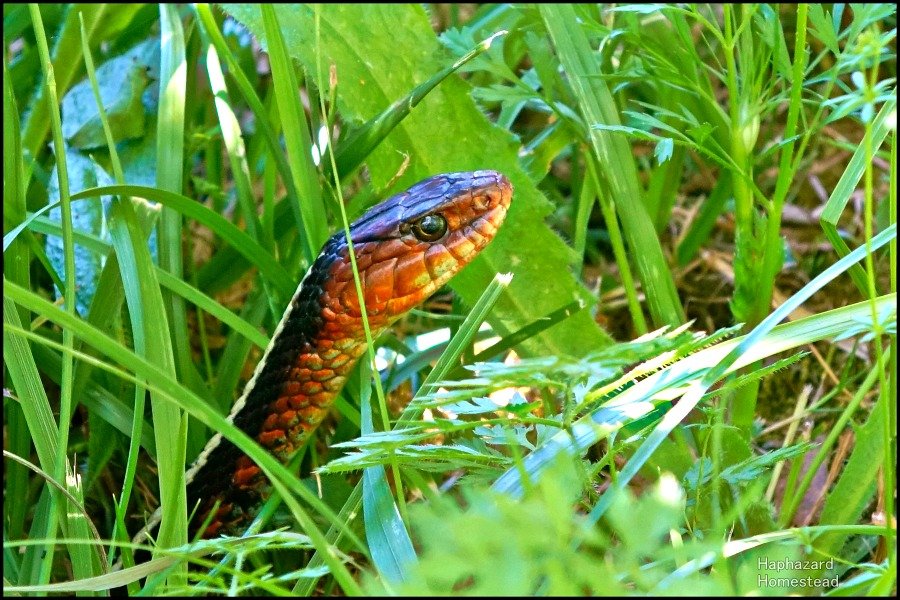
I am only entering this photo in the challenge. Details: SONY RX10, f5, 1/80 sec, ISO 500, 31mm What kind of snake is this? It's a type of Garter Snake. Garter snakes are the most widespread kind of snake in North America, but there a lot of different species -- and within each kind, there can be several sub-species. This gorgeous snake is a sub-species of the Common Garter Snake (Thamnophis sirtalis), the Red-spotted Garter Snake (T.S. concinnus).
When I find a snake, I like to relate to it on its terms. In this case, that meant getting down on the ground and peering through the grass. It had its head raised up about 5 inches, so it could see over the grass. Follow the stripe on its back all the to the left - all that is lifted off the ground and it was completely still for the entire time I watched it. That's some core strength and body control!
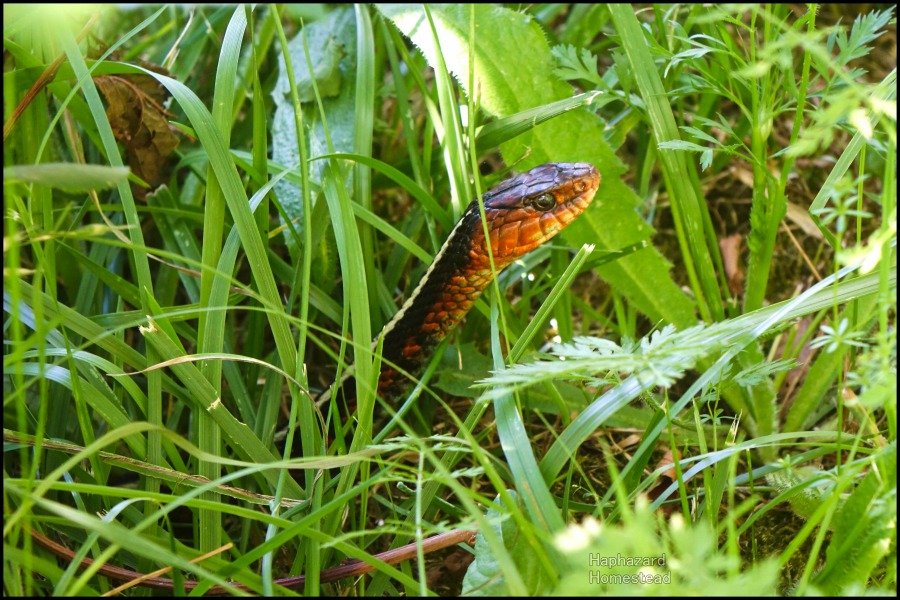
It's easy to catch Garter Snakes. They generally are not aggressive if they're handled with a loose touch - gloves are not needed! There are a lot of garter snakes that live here at Haphazard Homestead. But I would rather let them go about their business rather than bother them. Garter snakes help me out! They eat slugs, which really great since slugs can be a major garden pest. And they eat mice, too, which is good because I let a lot of my grass set seed, so I have field mice around!
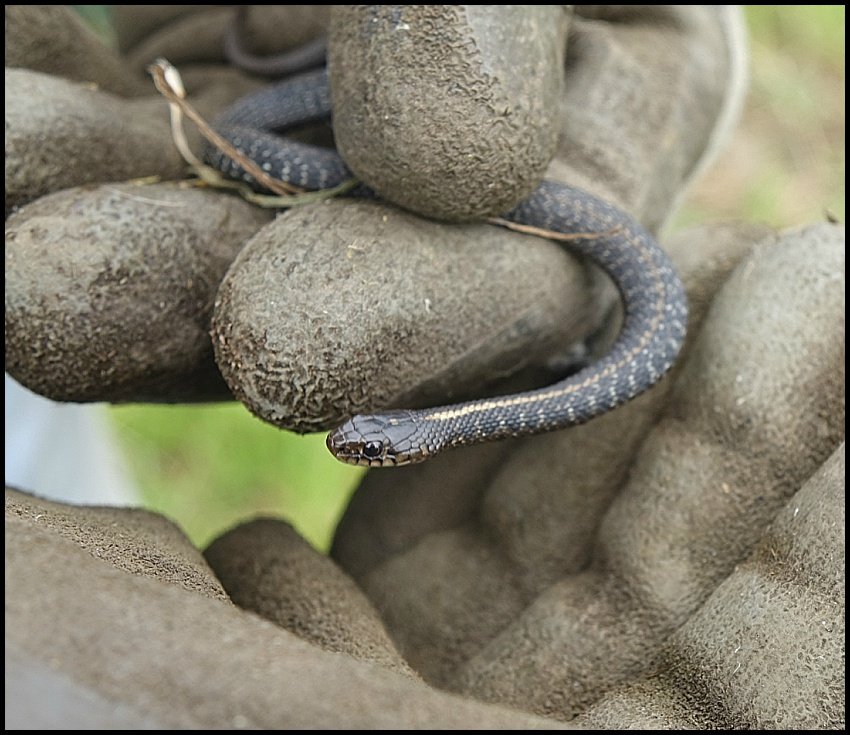 This little Garter Snake is probably less than a month old. They are born live - not from eggs like most snakes - usually in July or August in my yard. I see a lot of these little snakes then!
This little Garter Snake is probably less than a month old. They are born live - not from eggs like most snakes - usually in July or August in my yard. I see a lot of these little snakes then! In Oregon, the Red-spotted Garter Snake is only found in the Willamette Valley, where I live. They aren't the most common Garter Snake that I find. But they are the most colorful! They don't have stripes on their sides, like most Common Garter Snakes. The cream-colored stripe along their back, the red side patches on a black background, and their red head, are distinctive.


This one was sunning itself a gravel road, not going anywhere. As long as I moved slowly and didn't threaten it, it was content to stay stretched out and unconcerned. It let me get pretty close, too. Life's too short and dangerous for a snake already. Why disturb it? I left it lying in the summer sun, soaking up the heat. That's a contented snake!
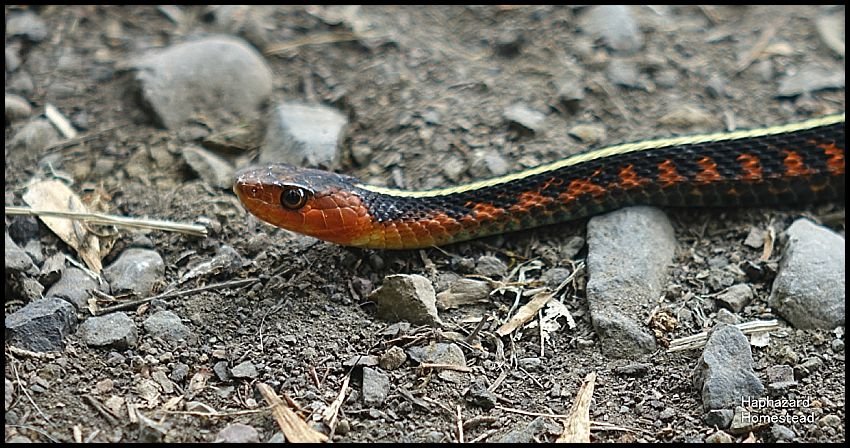
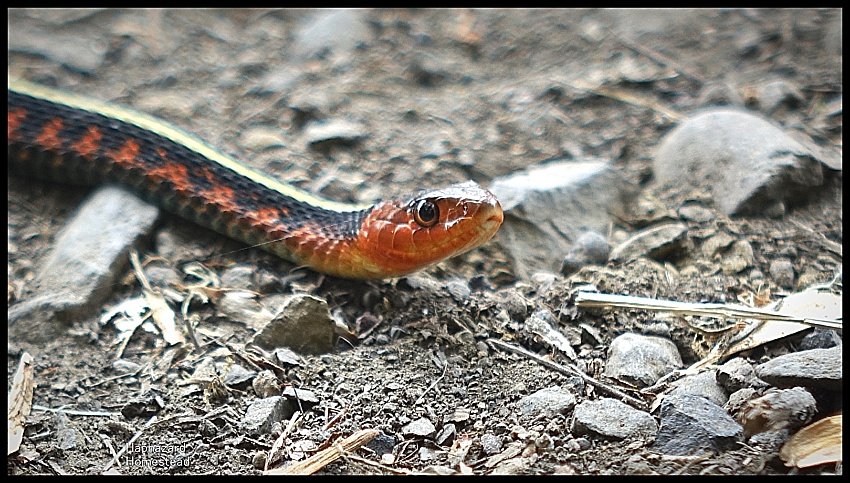
What Do You Think?
Do you like snakes? What snakes have you seen where you live? What's the most colorful snake you have ever seen? I really would like to know!
Sources: Living with WIldlife - Snakes, Oregon Dept. Wildlife and Alan St. John, Reptiles of the Northwest, Lone Pine Publishing, 2002.
** Haphazard Homestead **
*** foraging, gardening, nature, simple living close to the land ***
All content is 100% Haphazard Homestead - photos and all!
I participate in Operation Translation. All my posts are available for translation under the rules listed on the linked post from @papa-pepper. Logo provided by @oepc85. Post goes 100% to Steem Power! Logo provided by @merej99

*** foraging, gardening, nature, simple living close to the land ***

